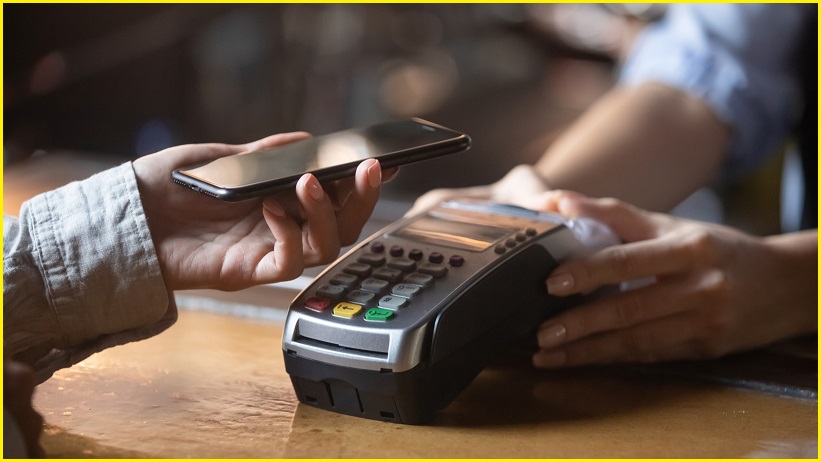A year in which retailers favouring contactless payments has made Australia one of the world’s most cash-averse country, according to a new study suggesting that cash payments will comprise just 2.1 per cent of all payments by 2024.
That is far lower than the projected global average of 12.7 per cent by 2024 predicted in the newly released FIS Global Payments Report, reflecting an Australian exodus from cash that saw just 8.3 per cent of in-store purchases completed using bills during 2020.
Those figures were a dramatic slide from recent years, with Reserve Bank of Australia (RBA) figures suggesting cash had already declined from 62 per cent of purchases in 2010 to just 27 per cent of purchases in 2019.
Last year’s abandonment of cash has been widely observed, with financial broker Savvy reporting in a recent survey of 1003 Australians that just 18.1 per cent were using cash as their primary payment method – and that 47 per cent prefer to pay using digital wallets.
Last year, a survey by research firm Capterra found that 55 per cent of Australians were comfortable with the idea of a completely cashless society.
“COVID-19 is accelerating the pace of cash’s decline faster than even the most bullish projections,” the FIS report says, noting that the pandemic had “accelerated the decline of cash by over three years” and pushed global cash usage down from 32.1 per cent of global point-of-sale volume in 2019, to just 20.5 per cent in 2020.
Despite limited evidence to support early concerns that cash could be a vector for disease, wary consumers embraced the use of mobile and other digital wallets – which, FIS noted, accounted for 8.1 per cent of Australian purchases last year and were expected to account for 15.5 per cent of purchases by 2024.
Some 20.2 per cent of the Savvy survey respondents said they had started using a digital wallet since the beginning of 2020, and a further 7.3 per cent saying they had started using digital wallets within the past six months.
By contrast, FIS reported, debit cards were used for 40 per cent of purchases and mobiles used for 24 per cent of purchases last year.
All-digital innovation
The broad embrace of contactless and digital payments has driven fintech innovators to explore new options, with debit-card payments giant eftpos acquiring money-transfer app Beem It to add to its stable of electronic payments.
As Australia’s major processor of retail payments, eftpos has doubled down on its market dominance with recently-announced plans to develop a nationwide payment network based on QR codes, with pilot testing due by mid-year and full rollout by 2022.
Increased consumer familiarity with QR codes – due in large part to their ubiquity on COVID-19 check-in signs – had created an opportunity to reinvent digital transactions at scale, eftpos CEO Stephen Benton said, projecting that the national network would “elevate and enrich the consumer payment experience while driving growth for local businesses.”
By providing a new conduit into eftpos’s extensive back-end payments network, Benton said, the new ecosystem would “enable local home-grown innovation” by using APIs to integrate the system with digital payments and digital wallets.
The construction of digital-payment ecosystems was primed to accelerate in coming years, with online shopping now broadly accepted in Australia as elsewhere.
The strength of alternative payment methods is even driving national-level debates about national digital currencies in China, India, and Europe – including some who believe digital payments could eventually coalesce around a single global digital currency.
The RBA is also exploring digital currencies – although, as governor Philip Lowe explained during a recent National Press Club address, central banks long ago stepped away from printing more cash just to create money.
Distribution of new funds happens electronically between the RBA and eligible lenders, he said, noting that “it’s not printing money. We don’t operate that way anymore, obviously because we live in an electronic world.... but it’s a heavy responsibility to be able to just create money like that.”
Yet broad adoption of digital payments has some experts warning about the experience of even more-cashless Sweden, where banks rapidly diluted their expensive ATM networks, alienating many elderly and disabled residents who struggled to access cash to buy things.
That country’s government eventually had to force banks to maintain a minimum level of cash services – a point that Phil Pomford, APAC general manager for FIS Worldpay Merchant Solutions, drew on as he warned fintech innovators to remember the importance of ‘financial inclusion’ – catering for cash-dependent parts of the economy such as tip jars, charity donations and the like.
“Fintechs and regulators need to collaborate to build new frameworks that allow for this rapid shift,” Pomford said, “and use technology to boost financial inclusion for underserved communities.”










